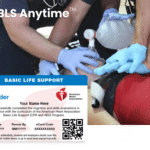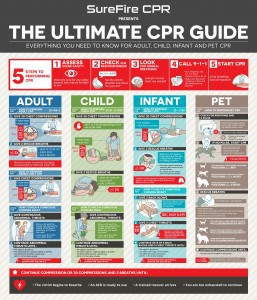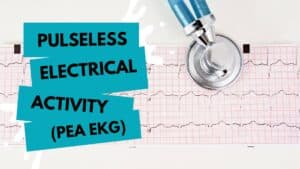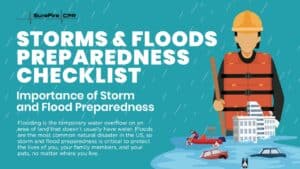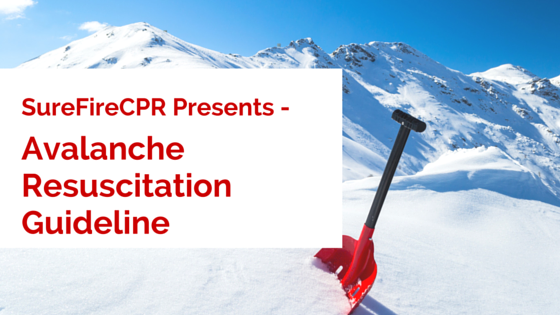
The winter season is in full swing, and avalanche awareness is the primary topic laypeople and healthcare personnel alike need to review. For winter recreationists traveling in avalanche terrain, you may be the one to initiate a search and rescue for a companion. Trained avalanche professionals aren’t going to be the first to the scene; you are. This is where taking CPR certification classes and have having basic first aid skills are going to come in handy.
According to evidence from the International Commission for Mountain Emergency Medicine (ICAR MEDCOM), survival rates for avalanche victims in cardiac arrest is 77%. Survival is dependent on the amount of time they were buried beneath snow, their core body temperature, airway patency (the openness of the airway), and their initial ECG rhythm.
The time of burial is the most important factor regarding a victim’s survival. In multiple studies led by ICAR MEDCOM, evidence shows that victims buried in snow for more than 35 minutes with an obstructed airway did not survive. Using this 35-minute time frame as a foundation, avalanche resuscitation guidelines fall into several paths. Be sure to call for medical help as soon as you find the victim. Then begin with the following steps.
Burial Time
- If the avalanche victim has been buried for less than 35 minutes:
- The victim shows vital signs, begin giving first aid.
- The victim is not responsive, begin CPR and resuscitation and take the victim to the closest medical facility.
- If the victim was buried longer than 35 minutes:
- The victim is showing vital signs, give first aid.
- Avalanche First Aid: Although suffocation may be your primary concern, avalanche victims are often injured while buried beneath the snow. As an avalanche travels down a mountain, it can bring trees and rocks with it. Once you find the victim, it is important not to immediately try to grab them and pull them out. They may have broken bones, including a fractured spine. To prevent any further injury, you should keep the victim in their position, and call for medical help. If you have a First Aid kit, you may be able to treat any cuts on the face or arms. If the victim doesn’t believe they suffered any spinal injuries, you may be able to move them to treat any incisions and broken bones.
- First Aid classes also teach how to assess an environment for any avalanche indications, and how to treat these
Avalance Resuscitation
- If the victim has been buried for more than 35 minutes and they aren’t showing vital signs, initiate CPR immediately. Do this whether the victim has an open airway or not. Free the face from any snow and give chest compressions followed by rescue breaths.
- If the victim shows obvious signs of lethal trauma, stop CPR and wait for instruction from medical personnel or the dispatcher.
All attempts resuscitating a victim following an avalanche must involve oxygenation. In addition to chest compressions, mouth-to-mouth resuscitation is required because the most common cause of death for avalanche victims is asphyxiation.
CPR
If you are a bystander to an avalanche emergency, or if it is your loved one who has suffered cold-related physical trauma, here are the basic steps for CPR:
- Call 911
- Move the victim only if necessary; otherwise, keep him/her where they lay because it is important to support an avalanche victim’s spine to prevent any further injury.
- Make sure the victim’s airway is opened and unobstructed.
- Check for breathing. Listen for breaths and watch the victim’s chest to see rising and falling.
- Check for a pulse. Place two fingers on the victim’s neck, on the carotid artery. Feel for a pulse for no less than 30 seconds.
- Begin CPR.
- Severe hypothermia in an avalanche emergency will require a longer duration of CPR. The victim’s pulse will be slower, and you will need to administer chest compressions and mouth-to-mouth resuscitation for as long as you can without harming yourself. If you detect the victim is in shock, and they are conscious, elevate their feet and try to warm them up.
Treating Hypothermia
While hypothermia is rarely the primary cause of death in avalanches, it should be treated if possible to prevent any serious injuries and illness. A victim can be helped if the stages of hypoxia, hypercapnia, and hypothermia are cut off:
Stage 1 Hypothermia: The victim is conscious and shivering.
- Victim should move around
- Insulate the victim’s body
- Give the victim warm water to drink if possible
Stage 2 Hypothermia: The victim has impaired consciousness with no shivering.
- Gently move the victim on their side
- Insulate the victim’s body
- Apply any heat packs on the body
- Administer oxygen
- Transport the victim to a hospital as quickly as possible
Stage 3 Hypothermia: Severe hypothermia. The victim is unconscious.
- Follow the steps listed above under Stage 2 hypothermia, in addition to:
- Protect the victim’s upper airway
Stage 4 Hypothermia: Severe and profound hypothermia. No vital signs are given.
- Begin with the steps listed under the previous hypothermia stage, as well as:
- Give basic CPR, including chest compressions and rescue breaths.
- Do not give Hands-Only CPR; the victim needs oxygenation.
Here are some essential avalanche tools all mountain recreationists should carry:
- Beacon—Active radio beacon transceivers that operate at 457 kHz and are specialized for finding people or equipment buried under snow. If you and your companions carry one and they are turned on, your beacon may pick up the signal from the buried person’s radio.
- Probe—A probe is basically a long, skinny pole that helps you to pinpoint and mark where the buried person is. After you pick up the signal from the beacon, you can mark the area with the probe and can begin digging without forgetting where you targeted the victim.
- Shovel—If you carry a shovel, you can start digging for the victim after your transceiver has picked up a signal. Once your probe has determined the area and depth of the person buried, start by clearing snow to the sides first, and digging the snow only once. This method is the most effective for maintaining the rescuer’s stamina and speed. Look for the largest and most durable shovel you can carry. In an avalanche emergency, a small, flexible shovel isn’t going to be of much help. For further instructions on digging techniques and different scenarios, read this article.
As an untrained layperson, you can prepare yourself and your loved ones for winter time emergencies by reviewing guidelines and educating yourself. Together with standardized teaching material and in-person training, this avalanche resuscitation guideline is a tool that can help improve victim outcomes with more competent and efficient rescuers.
For initial or refresher CPR training, check out the classes from SureFire CPR. And if you are a healthcare professional, you will need these classes to prepare you for acute medical emergencies.




